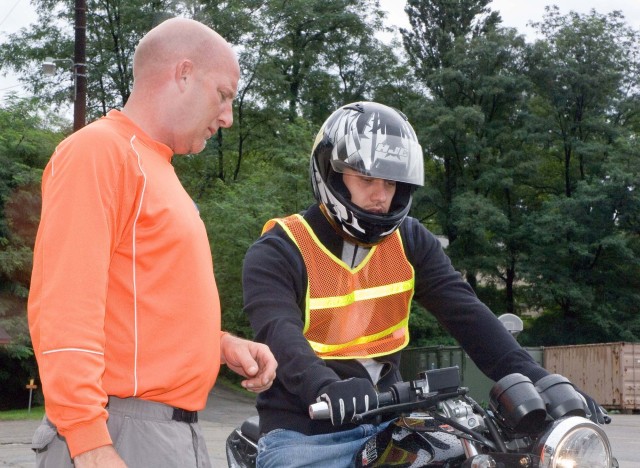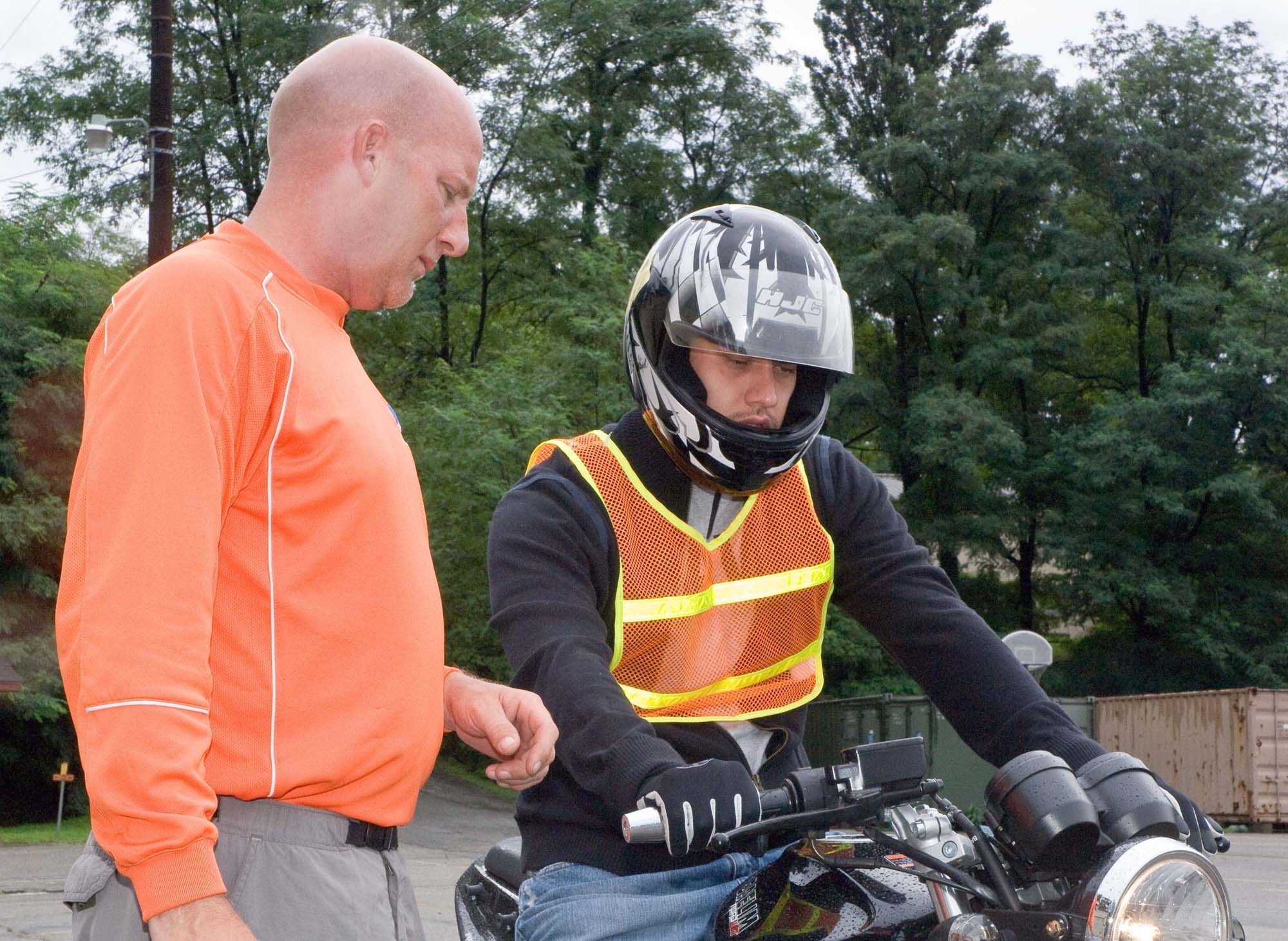YONGSAN GARRISON, Republic of KoreaMaster Sgt. Gregory Deschapell, 8th U.S. Army, has been operating motorcycles for about three years in Korea. Although he has never had an accident, he knows it's important to brush up on motorcycle safety skills.
"It's always good to have a refresher," he said. "Sometimes, when you go out there and start riding, you get some bad habits. So, it's always good to come back and learn about the basics over again."
He was one of seven people who attended the Army Traffic Safety Training Program Basic Riders Course at Yongsan Aug. 11-12. Anyone who wants to operate a motorcycle must attend this free program.
ATSTP is available at all major Army installations worldwide to provide courses of instruction to make sure that all military personnel who operate motorcycles are trained properly, according to lead instructor Scott Steuerwald. His company, Capefox Professional Services, is contracted by the Army to manage the program.
"The Army Traffic Safety Training Program has been around for three years," Steuerwald said. "We have trained over 30,000 motorcycle riders within the Army. This program is all over the world where the Army goes."
ATSTP offers three different courses in Korea: the Basic Riders Course, the Experienced Riders Course, and the New Military Sport Bike Course. The first two courses are required by Defense Department regulation for anyone who plans to operate a motorcycle, Steuerwald said.
Those regulations define a motorcycle as "any motor vehicle having a seat or saddle for the use of its operator and designed to travel on not more than three wheels in contact with the ground." This includes motor scooters and motorized or motor-assisted bicycles.
"There are written tests and skills test required to successfully pass the courses," Steuerwald said. "Upon completing those, then you can get a USFK motorcycle endorsement."
U.S. Forces Korea Regulation 190-1, which governs license and registration in Korea, also requires anyone operating a motorcycle or moped and has obtained a USFK license to attend refresher training every three years, just like Deschapell did.
"You always have to know that there is room to grow and learn," Deschapell said. "Certainly, riding in Korea has taught me that. You have to be able to anticipate what the traffic will do. You have to be able to analyze the traffic situation and adjust your riding behavior to that."
The Basic Riders Course, a two-day course, teaches the fundamentals like physical and mental skills needed to operate a motorcycle safely. Participants learn about risk management and special riding situations in classrooms, along with basic controls such as straight line riding, stopping, turning and shifting in the field.
The Experienced Riders Course, a six-hour course, focuses more on safety skills needed for survival in traffic. It teaches skills like stopping quickly, cornering and swerving, rider responsibility and motorcycle inspection.
Staff Sgt. Tiffinie Irvin, of the 8th U.S. Army Equal Employment Opportunity Office, was one of the participants in the Basic Riders Course.
"I feel that I have learned a lot of information and receive great training," she said. "I will be attending the classes in the future to further my skills in riding and until I buy my motorcycle. It has been something I have been wanting to do for a while."
Related Links:
See More Motorcycle Safety Training Photos at USAG-Yongsan's Flickr Gallery


Social Sharing